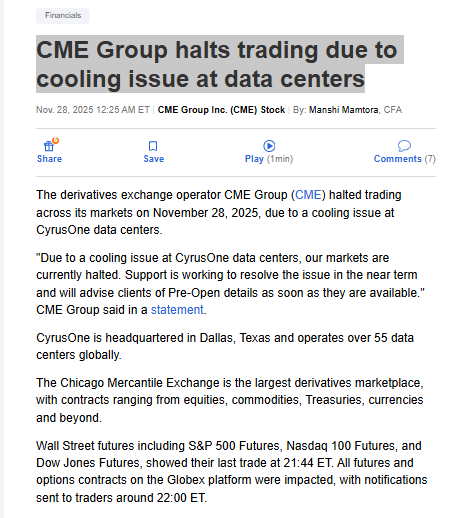Overview: The dollar remains offered ahead of the FOMC meeting outcome. That no official has pushed back against the press story that some suspect was planted by the Fed Chair (will a reporter specifically ask him about it today?) during a quiet period should not be taken as evidence one way or the other. And many understand that it is not unprecedented. Still, we note that the Atlanta Fed GDP tracker was revised yesterday to 3.0% growth in Q3. The federal government is running a budget deficit around 6.5% of GDP despite the above trend growth and now the central bank is poised to cut interest rates aggressively starting today with the economy expanding at 3% for the second consecutive quarter, which would be the third quarter in four of such growth. The focus of the Fed meeting will be on the size of today's move and signal through the Summary of Economic Projections that magnitude of rate cuts projected for the remainder of this year and next.
Chinese markets re-open for the first time since the end of last week. The yuan strengthened with the help of falling US yields and a stronger yen. The equity market was narrowly mixed and mixed in the Asia Pacific region as whole. South Korean markets remained closed for the extended national holiday and Hong Kong markets were closed. The Stoxx 600 is giving back yesterday's gains while US index futures are slightly firmer. Benchmark 10-year yields are 3-5 bp higher in Europe and the 10-year US Treasury yield is up a couple basis points to 3.66%. The 10-year Chinese government bond yield fell to a new low near 2.03%. Gold is consolidating in a mostly $2566-$2576 range today. The record high as set on Monday slightly below $2590. November WTI reached a two-week high yesterday near $70.65 but has come back offered today. It below $69 in Europe. Yesterday's low was around $68.50. A loss of it would weaken the technical tone and warn of a test on $67.00-$67.50.
Asia Pacific
Australia reports August jobs data the first thing tomorrow. Overall job growth is running a bit faster than last year. The January to July average monthly job gain is about 45k this year. The average was near 35k in the first seven months of 2023. Growth of full-time positions has been even more impressive. The average so far this year is 39k compared with 24k in the year ago period. Still the unemployment rate has crept higher (4.2% in July 3.9% in December 2023, and 3.7% in July 2023). This reflects the labor force growth and increase in the participation rate (67.1% in July, 66.6% in December and July 2023). The central bank meets next week and there is virtually no chance of a cut, though there is an 88% chance of a cut before the end of the year discounted by the futures market.
US rates rose after the stronger than expected retail sales and industrial production report. This in turn helped lift the dollar against the yen after trading below JPY140 on Monday. The dollar reached JPY142.50 late in the North American afternoon, a three-day high. The dollar was turned back in the Asia Pacific session and fell to about JPY141.25 before finding a bid that lifted it back to JPY142 where it stalled again. There are $5.6 bln in options that expire today a few hours before the conclusion of the FOMC meeting at JPY142.50-60 There are various narratives about the successful BOJ intervention and the state of carry trades, but the correlation of the changes in the US 10-year yield and the exchange rate is concrete and tangible. If the Fed is less dovish than expected, or if there is a buy the rumor, sell the fact type of activity, the US 10-year yield still appears to be the single best indicator of the direction of the yen. Over the past 30-day the correlation is greater than 0.70 (and incidentally is a little higher than the correlation with the interest rate spread between the US and Japan). After settling above Monday's high ($0.6750) yesterday, the Australian dollar has extended its gains to about $0.6785, its highest level since September 3. The $0.6790-$0.6800 offers a nearby cap, but the high in late August was closer to $0.6825. The intraday momentum indicator is stretched, suggesting consolidation in early North American turnover may be likely. China's market re-opened from the long-holiday weekend. The rise in US rates and the recovery of the dollar against the yen facilitated the greenback's gains against the offshore yuan yesterday, where it reached CNH7.11. The recovery of the yen helped push the greenback slightly below CNH7.09 today. The five-day low set on Monday was about CNH7.0880. When mainland markets closed last Friday, the dollar was closer to CNH7.10. The PBOC set the dollar's reference rate at CNY7.0870 (CNY7.1030 last Friday).
Europe
The UK reported a 0.3% increase in August CPI, which given the base effect, leaves the year-over-year rate steady at 2.2%. The three-month annualized pace is less than 1%. Core inflation ticked up (3.6% from 3.3%), largely reflecting the increase in service prices (5.6% vs. 5.2%). Airfares was an important source of price pressures. They surged by 22.2%. Producer prices were soft er than expected (input prices -0.5%; output prices -0.3%). Still the odds of a Bank of England rate cut tomorrow slipped to around 15% from closer to 25% yesterday. Two rate cuts are nearly fully discounted in the last two meetings of the year. By the middle of next year, the swaps market is pricing 130 bp of cuts. Norway's central bank meets tomorrow. The swaps market sees no chance to cut rates until the December 19 meeting. The swaps market has 150 bp of cuts discounted over the next 12 months.
The euro set a seven-day high yesterday near $1.1145. The high from the September 6 US jobs report day was a little higher around $1.1155. The euro lost its bid after the US data and set sessions lows near $1.1110. It was the first losing day in four for the euro. Fed decision day may make for a more volatile exchange rate, but so far today, it has traded between ~$1.1115-$1.1140. Note that there are over 1.5 bln euros in options at $1.11 and $1.12 that expire tomorrow. Sterling made a marginal new six-day high yesterday (~$1.3230), and like the euro, it held slightly below the high set around the US jobs data (almost $1.3240). It was sold a bit more aggressively than the euro, but we suspect it was mostly about positioning. Sterling found support ahead of $1.3145 yesterday, which is the (38.2%) retracement of its recent bounce (from $1.30). It is trading firmly though within yesterday's range. After it tested the $1.3155 area in in late Asia Pacific turnover, it rallied through the CPI and early European activity to return to $1.3230. The intraday momentum indicators for both the euro and sterling are stretched, which also seems to favor consolidation in early North American activity.
America
It is all about the Federal Reserve today. The market had seemed comfortable with a 25 bp rate cut by the Fed until the piece by Dow Jones, which many think was planted story to put the 50 bp back on the table. If that was indeed the intent, it was successful, and the derivatives market is pricing in a little more than 2/3 chance of a 50 bp cut compared with less than a 20% chance as of the close last Wednesday. If the Dow Jones story was an intentional effort to put 50 bp back on the table during the Fed's quiet period, the letter from three Democratic Senators calling on the Fed to cut by 75 was a likely leak as well. Trump has warned the Fed not to cut rates before the election. At Jackson Hole, Powell made it clear it was determined to do so. Fed officials will update the Summary of Economic Projections. The median forecast in June had the Fed funds between 5.0% and 5.25% in this year and between 4.0% and 4.25% for the end of next year. The Fed funds futures are between 4.00% and 4.25% at the end of this year and between 2.75% and 3.0% at the end of next year. The Fed's economic assessment is unlikely to vary much from what Fed Chair Powell said at Jackson Hole, namely that the downside risks of labor market have increased. Regardless of the size of today's move, Powell will likely reiterate what others have said, and affirm that a series of cuts are appropriate. Meanwhile, despite the talk of de-dollarization, note that shortly after the Fed cuts, so will Hong Kong, Saudi Arabia, and the UAE. Some suspect easing by the Fed could also influence the timing of the anticipated PBOC move. On the other hand, Brazil's central bank has signaled the likelihood that it will hike the Selic rate. Recall Brazil had been among the first to cut rate in August 2023 and after six half-point cuts, delivered a quarter-point cut in May and signaled the end of the easing cycle. A quarter point brings the Selic rate to 10.75%. The swaps market sees another 175 bp over the next 12 months, which seems a bit much.
The US dollar traded at a marginal new four-day high against the Canadian dollar after Canada reported an outright decline in August CPI, which seems to lower the bar for a 50 bp cut. It briefly traded a few ticks north of CAD1.3615. But that was it. Although the greenback traded better against most of the other G10 currencies, it stalled against the Canadian dollar and retreated to the CAD1.3585-CAD1.3595 area in late turnover. That narrow range captures the bulk of today's price action. The dollar posted a bearish outside down day against the Mexican peso after local markets were closed for a national holiday on Monday. Initially, the dollar was bid in Asia and through the early US hours. and rose above Monday's high to almost MXN19.4050. The greenback reversed lower after the stronger US data, fell to almost MXN19.09, settled below Monday's low. Follow-through selling has been minimal so far today. The dollar leaked to almost MXN19.08 in early Asia Pacific trading before consolidating mostly below MXN19.15. Meanwhile, the dollar fell through the neckline of a potential double top against the Brazilian real yesterday. It held support near BRL5.4730-60, but the greenback looks to be headed toward BRL5.40.
Tags: #USD,Australia,Bank of England,Brazil,Currency Movement,Featured,federal-reserve,newsletter,Norges Bank,U.K.






































